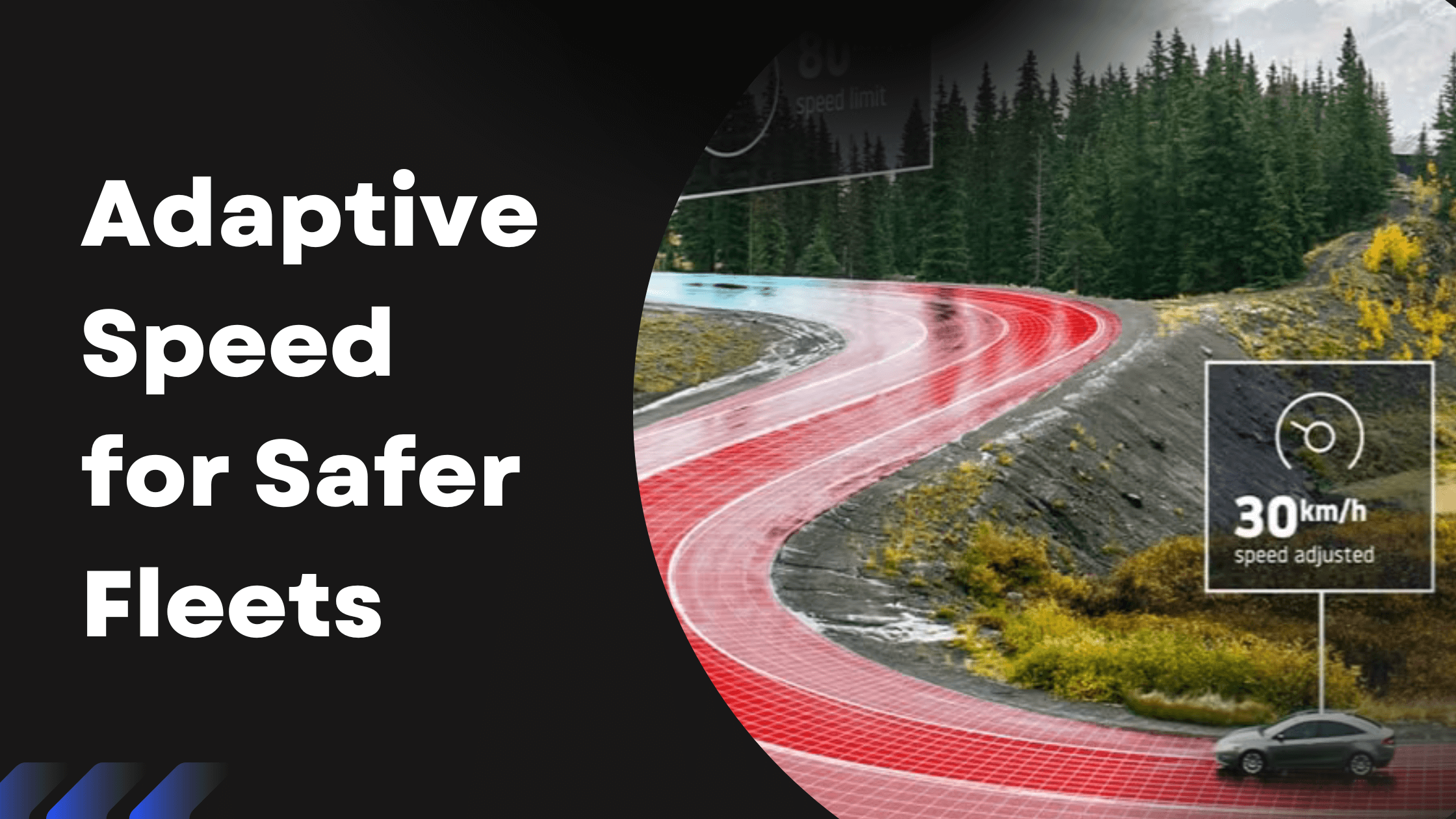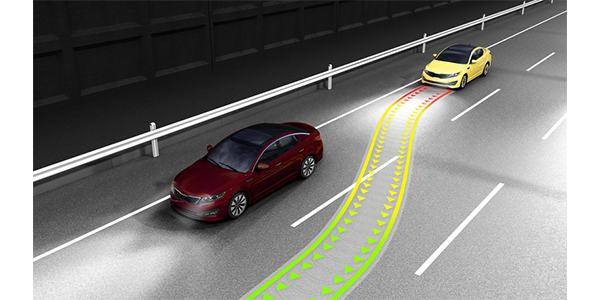Why Adaptive Speed Limiters Are a Game-Changer for Fleet Safety
May 30, 2025 Resolute Dynamics

When I first heard about adaptive speed limiters, I figured they were just another dashboard gimmick—something engineers cooked up to justify another product launch. Turns out, I was wrong.
After watching them in action, especially in high-mileage fleets, the impact was hard to ignore. Accidents dropped. Compliance improved. And drivers? They stopped pushing the pedal like it owed them money.
Whether you’re running a handful of vans or juggling a national fleet, one truth stands: keeping your drivers out of trouble isn’t optional. Adaptive limiters don’t just help—they change the game. No micromanagement, no guesswork, just results that stick.
✅Key Takeaway:
Adaptive speed limiters do more than block speeding—they tap into GPS, cameras, and AI to fine-tune speed as conditions change. This cuts down crashes, boosts rule-following, and encourages smarter driving across the fleet. They’re more than safety tech—they’re a shift in how operations run day to day.
What Are Adaptive Speed Limiters and How Do They Work?

So, what exactly are adaptive speed limiters? Think of them as cruise control’s smarter cousin. Also called Intelligent Speed Assistance (ISA), these systems don’t just hold your speed—they actively read the road and respond.
They tap into GPS data and road sign recognition to keep vehicles from drifting over speed limits. No more relying solely on driver judgment or wishful thinking on downhill stretches. It’s tech stepping in where human error often sneaks through.
Understanding the Basics
At their core, adaptive speed limiters are digital systems that continuously monitor a vehicle’s environment and regulate its speed dynamically, not just based on a preset maximum, but by interpreting real-time road and traffic data.
Unlike traditional speed limiters, which simply restrict a vehicle to a fixed top speed (e.g., 90 km/h), adaptive systems are flexible. They take into account:
- Current speed limits
- Road type (urban, rural, expressway)
- Temporary zones (construction or school zones)
- Weather conditions
- Traffic flow and congestion
- Driver behavior
By doing so, they adjust speed limits intelligently, keeping the vehicle compliant with laws and optimized for safety.
How the Technology Works
Adaptive speed limiters combine several advanced vehicle technologies:
1. GPS and Geofencing
GPS provides accurate location data, enabling the system to know exactly where the vehicle is and what speed regulations apply in that zone.
- Geofencing allows the vehicle to react to regional restrictions (e.g., speed zones in city centers or industrial parks).
2. AI-Powered Telematics
Telematics systems collect, transmit, and analyze vehicle data in real time—things like current speed, acceleration, braking, and route planning.
With AI and machine learning, the system can:
- Detect speeding trends
- Predict unsafe driving scenarios
- Optimize route and speed strategies
3. Camera-Based Sign Recognition
Front-facing cameras read road signs (especially speed limits) using computer vision algorithms.
- These signs could be temporary (like a construction warning) or variable (like electronic signs on highways).
- This ensures the vehicle doesn’t rely solely on static GPS data.
4. Real-Time Environmental Feedback
Some systems incorporate inputs from:
- Weather data APIs (e.g., heavy rain triggers slower speeds)
- Traffic information (e.g., rush hour congestion requires reduced speed)
- Driver fatigue detection systems (which may suggest or enforce speed reduction)
Types of Adaptive Limiting Behavior
There are typically two modes:
- Informative (advisory): Alerts the driver if they exceed the limit but doesn’t enforce it.
- Active (restrictive): Automatically reduces engine power to prevent speeding.
Advanced systems like those from Resolute Dynamics operate in active mode, where vehicle control systems can temporarily override the accelerator to keep the vehicle within safe speed boundaries.
The Safety Impact: Data-Driven Accident Prevention

Speed and human error—those are the usual suspects behind thousands of fleet accidents every year. Even seasoned drivers slip up. Maybe it’s a long shift, a second of distraction, or just pushing a little too hard. That’s all it takes.
Enter adaptive speed limiters. These systems don’t replace the driver, but they do add a crucial layer of backup. When judgment falters, the limiter steps in—keeping speed in check and risks down.
Why Speed and Human Behavior Are the Top Risks
Speed trims travel time, sure—but it also decides how badly things go sideways. A crash at 80 km/h? That’s not just a bad day—it’s a crisis. At 50, you might walk away. At 80, you might not walk at all.
The European Transport Safety Council reports that speeding factors into over 30% of fatal accidents. That stat doesn’t whisper—it shouts. And ignoring it comes at a cost no fleet can afford.
Now add human unpredictability to the mix—tailgating, slamming the brakes, reacting too late. It’s not hard to see the problem. That’s where tech like adaptive speed limiters earns its keep—stepping in when reflexes or judgment fall short.
How Adaptive Speed Limiters Reduce Risk in Real-Time
These systems actively regulate vehicle speed by reading real-time data from:
- Road signs
- GPS-based geofencing
- Camera-based recognition
- Traffic flow data
- Vehicle diagnostics
They automatically reduce engine power or provide alerts when the driver exceeds speed limits, ensuring that every vehicle operates within safe and legal boundaries.
By doing this:
- Speeding is no longer a choice, but a managed behavior
- Driver distraction or fatigue becomes less dangerous
- Risky maneuvers like rapid acceleration or late braking are reduced
This means fewer collisions, lower impact severity, and improved road safety compliance across the fleet.
Turning Driving Behavior Into Actionable Safety Data
Today’s adaptive speed limiters don’t just manage speed—they collect behavioral data that fleet managers can use to improve safety over time.
They track:
- Hard braking incidents
- Sudden acceleration
- Over-speeding events
- Lane drifting
- Driver fatigue or inattention alerts
This data is captured through AI-powered telematics platforms and analyzed to detect patterns. For example:
- A driver consistently brakes late at intersections
- A route has more speed violations than others
- One vehicle is involved in more near-misses than the rest
Instead of guessing where problems lie, fleet operators get data-backed insights that help them:
- Retrain specific drivers
- Modify unsafe routes
- Calibrate vehicles for better responsiveness
This is proactive safety—you don’t wait for an accident to happen. You prevent it from happening in the first place.
Real-World Results: Fewer Accidents, Lower Costs
Fleets that adopt intelligent speed limiters report:
- Up to 30% reduction in crash rates
- Fewer insurance claims and lower premiums
- Improved driver morale (less stress, clearer rules)
- Stronger fleet compliance reports during audits
Companies like those in logistics, delivery, and public transport—where timing and driver turnover are major issues—have found these systems especially useful. By standardizing how speed is managed, they remove guesswork and enforce safety in a fair, consistent way.
Building a Safety Culture, Not Just a System
Perhaps the most important effect of adaptive limiters is psychological. They reinforce the idea that safety is not optional. Every driver knows the system is watching and adjusting—not to punish, but to protect.
Over time, this builds a culture of accountability and awareness, which is far more effective than one-time training or policy handbooks.
In industries where a single crash can mean major financial, legal, or reputational damage, this kind of embedded safety layer is not just smart—it’s essential.
Compliance and Regulation: Staying Ahead of Global Standards
In Europe, adaptive speed limiters will be mandatory for all new cars starting in 2024 under the EU’s ISA law. That tells us something big—governments are moving toward making this standard.
If you operate fleets in the UAE, MENA, or Asia, you’re likely already seeing local regulators talk about smart compliance. Adaptive limiters help your fleet meet those rules automatically.
From Dubai’s RTA requirements to India’s growing telematics push, being ahead of regulation is better than trying to catch up. These systems don’t just keep you legal—they show regulators that your fleet is future-ready.
Operational Benefits for Fleet Managers
Safety matters, no question. But there’s money on the table, too.
Cutting down on speeding doesn’t just prevent crashes—it trims fines, shortens downtime, and keeps insurance premiums from creeping up. Smooth driving also burns less fuel. Add it up, and you’re not just protecting people—you’re protecting profits.
You also get real-time alerts if something’s wrong. If a vehicle enters a no-speeding zone and the driver doesn’t slow down, the system takes care of it—or sends you a ping. That’s automated fleet compliance at its best.
Another bonus? Less wear and tear. Vehicles that don’t speed or brake hard need fewer repairs, which means more uptime and smoother operations.
The Resolute Dynamics Advantage
What makes Resolute Dynamics stand out is how their adaptive systems fit into a full ecosystem: Capture → Connect → Control.
- Capture: Their AI vision tools detect road signs, monitor driver behavior, and identify hazards on the spot.
- Connect: With telematics and real-time data, you get a full picture of your fleet at all times.
- Control: The adaptive limiter itself kicks in to manage speed, enforce safe driving, and optimize engine performance.
The result? A full-circle solution that doesn’t just monitor but actively prevents accidents.
And with over 200,000 connected vehicles across 20+ countries, including the UAE and Southeast Asia, these systems are built to scale with you.
Challenges and Considerations
Now, no system is perfect.
The upfront cost of adaptive speed limiters might seem high. But when you compare it to the cost of accidents, downtime, or insurance claims, it quickly balances out.
Integrating the system with older fleets can be tricky too. Some older models might need hardware upgrades. And drivers may need time to adjust—especially those used to full control.
That’s why driver training is key. Show them how the system helps, not hinders. Once drivers see it as a safety partner, resistance usually fades.
The Future of Fleet Safety with Intelligent Speed Control
Speed management is just the beginning. As more fleets adopt connected vehicle technology, systems like these will only get smarter.
Soon, adaptive limiters will talk to smart traffic lights, city sensors, and even autonomous vehicles. They’ll predict traffic slowdowns, reroute trucks, and auto-adjust speeds for pedestrian-heavy zones.
We’re not just reacting to accidents anymore—we’re building fleets that avoid them entirely.
Conclusion: Smart Speed, Safer Roads
Adaptive speed limiters are no longer just a “nice-to-have.” They’re becoming essential for anyone serious about fleet safety, compliance, and efficiency.
They give drivers support, protect your assets, and help your business stay ahead in a world that demands smarter, safer transport.
If your fleet is still relying on old-school limiters, it’s time for a change. The road ahead is adaptive and a lot safer.
FAQs
Q: Are adaptive speed limiters legal everywhere?
Not across the board—yet. But the tide’s turning quickly. Europe’s already pushing hard. The Middle East and parts of Asia aren’t far behind. Laws are shifting, and fleets that get ahead now won’t be scrambling later.
Q: Can they be added to older vehicles?
Yes, but some retrofitting may be required. It depends on the model and the system you choose.
Q: Do they affect driver performance?
In a good way. Many drivers say they feel more supported, especially in complex driving zones.